War, disease, famine and death: those four apocalyptic horsemen seem closer than ever at the moment. Add profiteering, greed, injustice and abuse of power to the disasters of climate change and it feels as if we are at the edge of a precipice with no hope of pulling back. Yet there is actually nothing new in the news. As the artist Brian Maguire puts it, war simply changes its address.
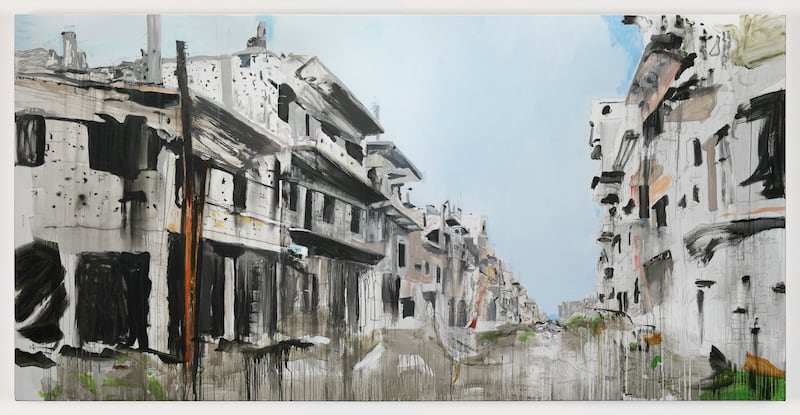
That phrase was the title of his exhibition based on his visit to Syria in 2017, documenting the ruins of Aleppo. “It’s got a new address now,” Maguire says. “It’s had loads of addresses since I did that work.” The artist’s extraordinary Aleppo paintings showed not only the ruins of a once great city, but also evidence of the arms trade that continues to fuel such conflict.
When I spoke with Maguire at the time, he was in Mexico but had recently returned from Sudan – more addresses in the travelogue of war – and we considered the role of the artist as witness. It is a role that may seem small and fragile in the face of the vastness of such carnage, yet it has a force and power that can carry truth across space and time.
This is a quality needed in abundance right now – yet one that is also not new. Then we talked of Francisco Goya, who wrote “yo lo vi” on one of the etchings in his Disasters of War series, made in the early 1800s. Goya was saying simply, and profoundly, “I saw this,” implying, as he did, “Now you cannot say this did not happen.”
In the face of injustice and atrocity, barbarity and inhumanity, refusing to turn away is of incalculable importance. Maguire has made witnessing his work since the 1970s, and the subject of his astonishing art. Today he is one of Ireland’s very best and most powerful painters, as La Grande Illusion, his survey exhibition at the Hugh Lane Gallery in Dublin, demonstrates.
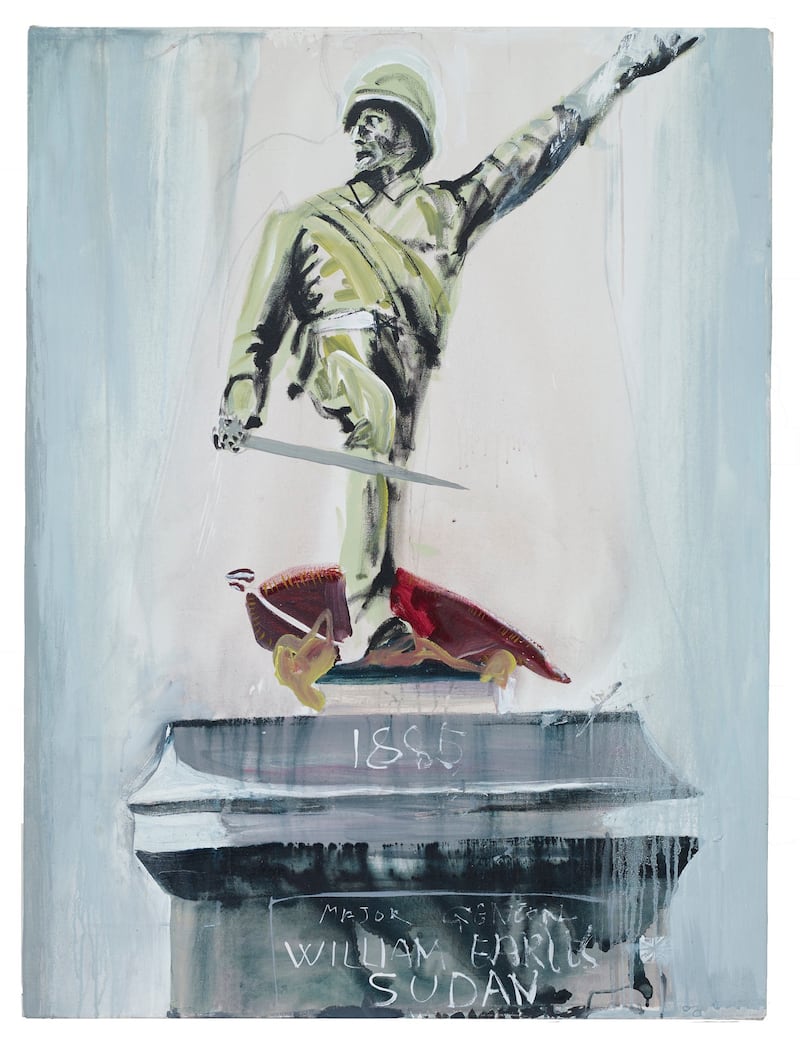
Taken as a series of chapters, across the space’s five main galleries, Maguire’s work shows its power through his depictions of the forgotten, the murdered, the displaced, the destroyed. He also focuses on those anachronisms of power that carry their toxic legacies forward: the statue of a forgettable general, responsible for colonial massacres; the logo of a multinational bank fined for failing to prevent money laundering by drug cartels. That particular work, Cocaine Laundry: HSBC, was previously shown in Ireland at the Void gallery, in Derry, as part of Maguire’s 2015 J’Accuse.
“It’s HSBC, yeah,” he says, explaining that this is just one of a series of paintings showing the logos of banks accused of similar violations wrapping what appear to be slabs of cocaine. “The pictures had to be fact-checked,” he says, recalling the anxieties of legal departments. “But they came back okay.”
In this series of work Maguire also showed the links between the drug trade, corruption, lawlessness and killing. Embedding himself with the El Norte newspaper, he included what was known as the feminicidio, or femicide: the disappearance, rape and murders of hundreds of young women in the Mexican city of Juárez.
“It wasn’t gender or race,” Maguire says. “It was class. They were the ones you could do this to. No girls from a middle-class background suffered this treatment.”
[ Insider art: finding release through creativity in Irish prisonsOpens in new window ]
We don’t tend to talk about class in Ireland. It is understood to be something that other countries or cultures do, most specifically the British. But class underpins our sense of equality, and the casual racism that finds danger in poor people of different ethnic backgrounds, but welcomes the wealthy to our dinner tables.
“I spent 15 years on the landings in Portlaoise Prison,” Maguire says. “I also worked the best part of 10 years in a university, so I know who goes where.”
He is quick to add that he doesn’t blame the children of privilege, who predominate in our third-level institutions; but, in accepting that, you must also accept the corollary: those who have grown up with far fewer choices are not solely to blame for where their lives have led them.
This is the power of Maguire as an artist. It is not power in the spurious sense of art-world leader lists, although his name should be up there without a doubt. That is unfortunately unlikely, as Maguire is not a mover and shaker, unless you count talking his way into prisons, favelas, the backrooms of newsrooms, the shelters of the dispossessed, and the homes of the nameless bereaved the world over as a form of moving and shaking. He certainly moves your compassion and shakes your complacency. And yet, despite the evidence of rage in his work, there is a gentleness, and a love, that come out in his paintings.
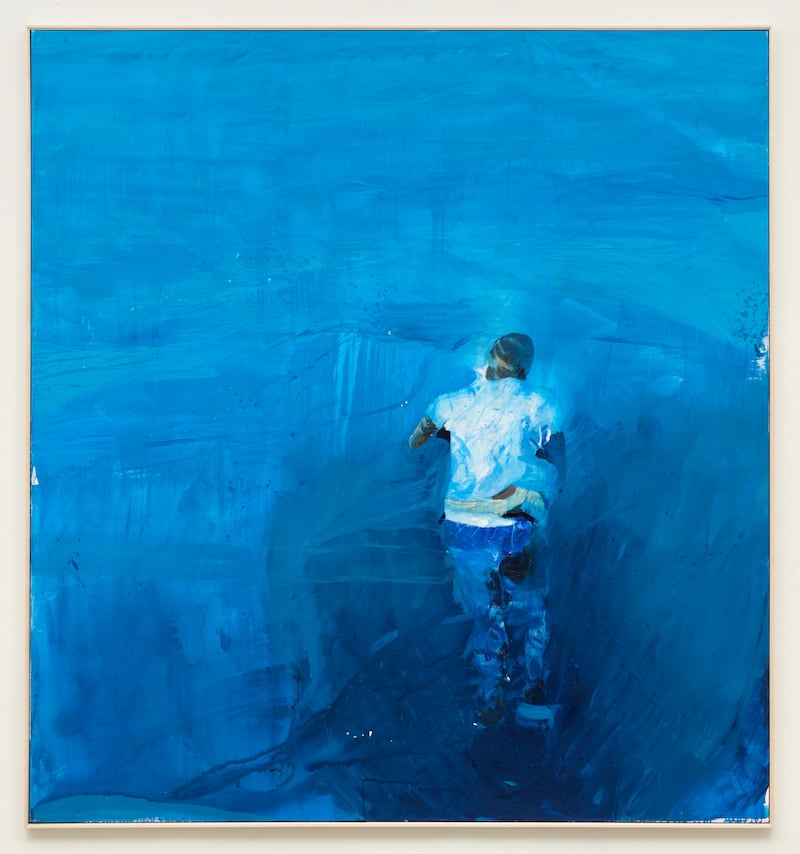
Looking at Maguire’s images: of a drowned man in a sea of tranquil turquoise, the unexpected golden splendour of a grow house, the bodies of human beings lying dead in the Arizona desert; there is a beauty (designed to lure you in), and a sense of shared humanity and solidarity that the artist has also brought to his work in psychiatric institutions, shelters and prisons.
Getting into prisons is harder than you might think, he says wryly, speaking, of course, of visits of choice rather than of decree. He is gifted with a wry humour that is very probably one of his most effective self-protective armours against the crushing enormity of his work.
Maguire is also almost painfully real. His steadfast sincerity can be shocking when you’re more used to people sliding off difficult subjects, but it is not an aggression. Maguire does not let himself off the hook, but I don’t feel judged by him for not having followed a similar path myself. Perhaps this is part of the tactics of compassionate distance that allows him, and a lineage of artists such as Goya, to do the work that they do.
“Don’t get me wrong,” Maguire says, changing the subject, but only slightly. “But when you paint someone, you look at them in the same way one looks at a lover. It’s very careful: you follow every line. I have become very affectionate to quite a number of people who were,” he adds, “quite dead.”
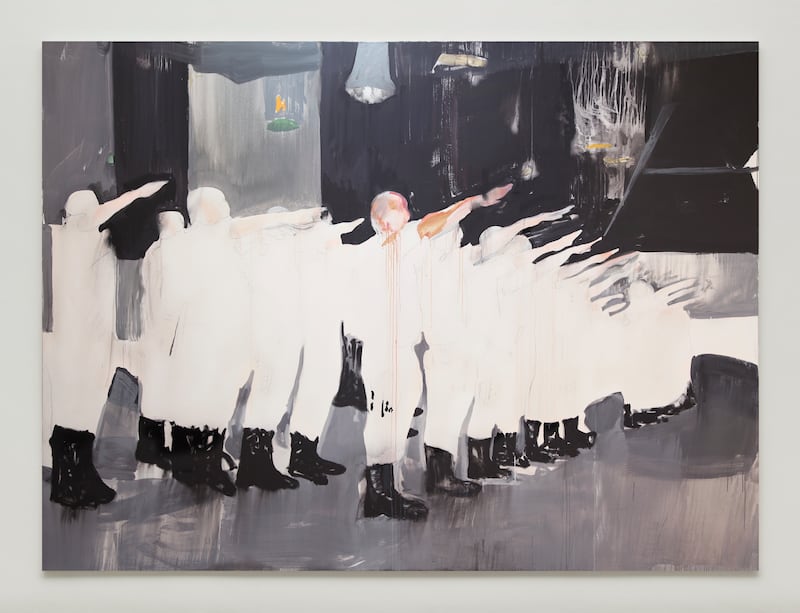
He’s talking of another affecting image, Police Graduation (Juárez), from 2012. In it, ranks of barely outlined officers are holding arms aloft in a chillingly Nazi-esque salute. “I didn’t really want that experience with the protection police,” he continues. “Because it was about the killings of students.” The results of this artistic decision also lend a sense of the dehumanisation process of the recruits’ education, of how we can be shaped, can lose our humanity. It is happening all around us.
“I want to preserve the image,” Maguire says of his wider work. Lara Marlowe, the former Irish Times foreign correspondent, “told me one time that she was looking for images on the net that she knew were there – she knew had been there – but in the period of seven years they had disappeared … I feel more comfortable making my own record of things. I commonly say they’ll either end up in a museum or keep cows in a field.”
There it is, that humour again, that makes all this somehow more bearable. But it shouldn’t be. We shouldn’t bear any of this.
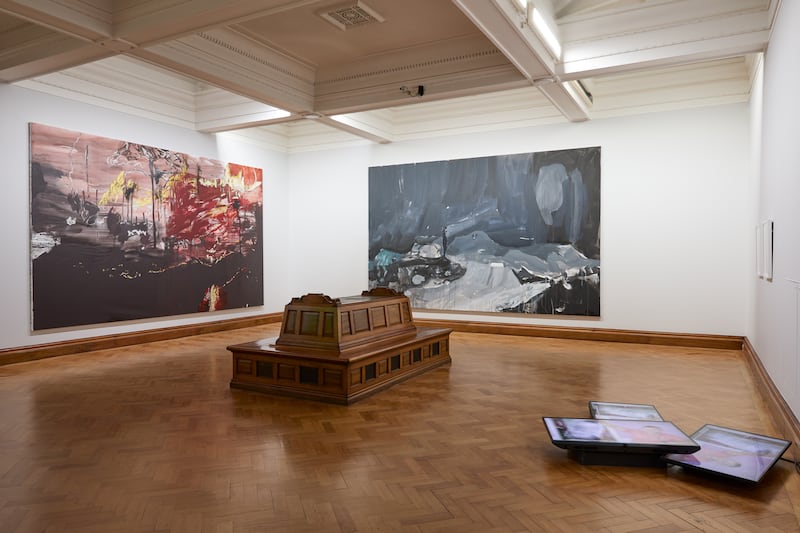
Maguire’s extraordinary and often extraordinarily beautiful works show how the line between “them” and “us” is far thinner than you might want to know. Our comforts are accidents of time, geography and history, and could change in a moment. Our comforts are also based on global inequalities.
The antidote is not to insulate or isolate ourselves further. It is to recognise our shared humanity. We saw this. We must not look away.
Brian Maguire: La Grande Illusion is at the Hugh Lane Gallery, Dublin, until March 23rd, 2025
















